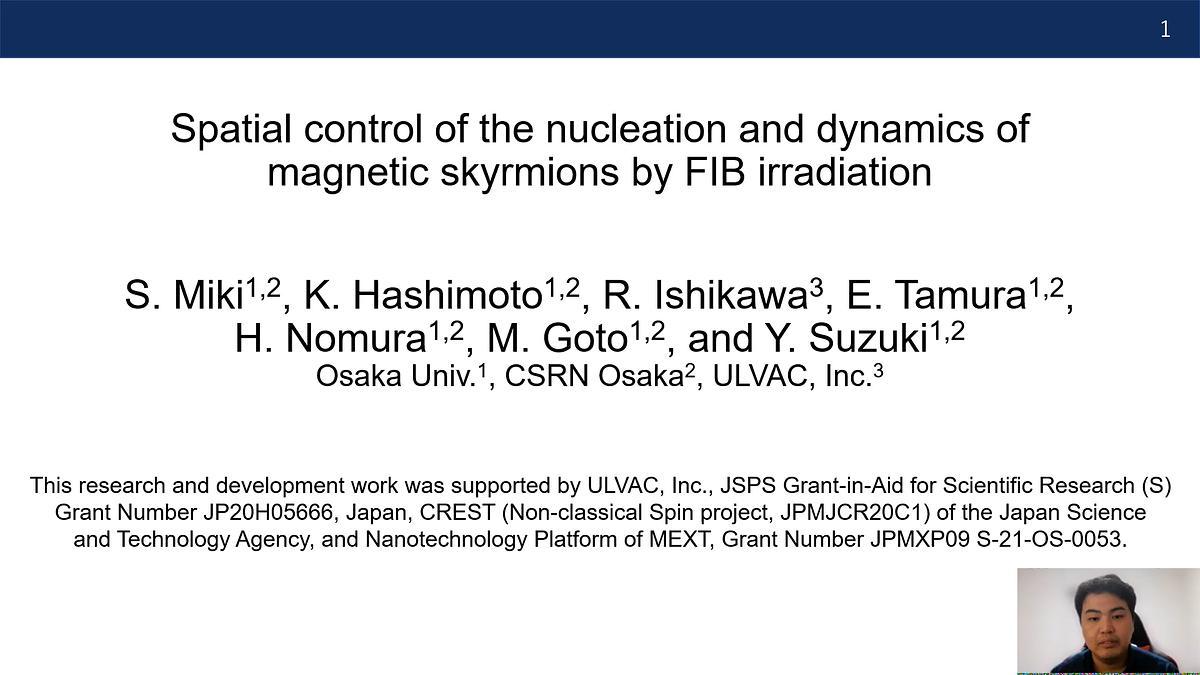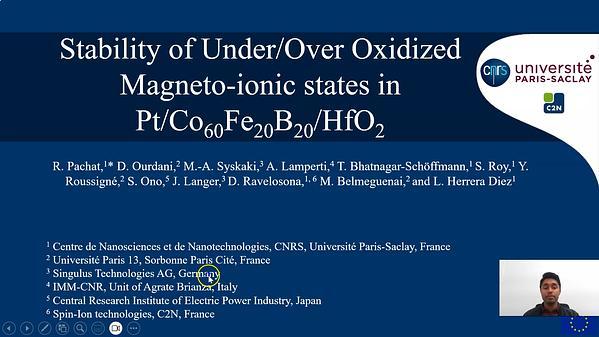
Premium content
Access to this content requires a subscription. You must be a premium user to view this content.

technical paper
Spatial control of the nucleation and dynamics of magnetic skyrmions by FIB irradiation
Magnetic skyrmions are candidates for information carriers in applications for racetrack memories and Brownian computers because of their topologically protected properties. The circuits to confine the skyrmions in the 1D track with the magnetic wire or the magnetic energy wall play a key role in realizing such novel devices1,2. The ratchet using magnetic energy gradient is also required for improving calculation speed in ultralow-energy-consumption operation3. Because the focused-ion-beam (FIB) technique can vary the dose of ions locally, FIB effectively makes the circuit with the energy gradient4. This study aims to verify the effect of the FIB irradiation on the confinement and diffusion of the skyrmions and to structure the magnetic-energy gradient driving the skyrmions.
We fabricated the stacking structure as Ta(5.9)|Co16Fe64B20(1.2)|Ta(0.2)|MgO(2.2)|SiO2(2.9) and microfabricated the surface of the sample by the FIB of the Ga+ source. The potential condition for skyrmion creation can be controlled spatially by adjusting the dose of ions. Fig.1 shows the observations of the irradiated region indicated with the white dash line by the magneto-optical Kerr effect (MOKE) microscope. The skyrmions in the unirradiated region appear at about 333K, and in the irradiated region at about 295.5K. Fig.2(a) shows the mean squared displacement (MSD) of the skyrmions in the irradiated region. Fig.2(b) shows the temperature dependence of the diffusion coefficient before and after FIB irradiation. FIB irradiation increases the activation energy. However, the size of the diffusion coefficient after irradiation is as large as that in the sample before irradiation as far as a higher temperature is utilized. We will discuss the possibility of sputtering and of Ga+ doping and the motion in the energy gradient. This work was supported by ULVAC, Inc., JSPS KAKENHI Grant Number JP20H05666, Japan and JST, CREST Grant Number JPMJCR20C1, Japan, and Nanotechnology Platform of MEXT, Grant Number JPMXP09 S-21-OS-0053.
References 1 S. Woo, et al. Nat. Mater. 15, 501 (2016)
2 Y. Jibiki, S. Miki, et al. Appl. Phys. Lett. 117, 082402 (2020)
3 S. Miki, et al. J. Phys. Soc. Jpn. 90, 114703 (2021)
4 K. Fallon, et al. small 16, 1907450 (2020)


